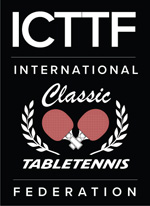September 21, 2015 - Recover from the Previous Shot
Table tennis is a game of movement. You'll regularly see players fail to run down a shot, and then grumble to themselves, "Too slow!" But was he really too slow, or did he fail to recover from the previous shot?
Everyone is limited by their natural foot speed. However, players who grumble about being "too slow" often have it wrong – they aren't too slow, they simply get a slow start because of a poor recovery from the previous shot.
Here are some tips that'll allow you to recover and react more quickly to an opponent's shot, allowing you to move more quickly. Do these, and your slowness of feet will be gone with the wind – or, to paraphrase a famous quote, "As the Table Tennis Gods are your witness, you'll never be slow again!"
- Focus on balance. If you are even slightly off-balance from the previous shot you'll have a slow recovery as you recover that balance, and so will be slow to get to the next shot. This especially happens after players do exaggerated follow-throughs on forehand shots. Try to stay balanced throughout the stroke.
- Ready stance. If you don't smoothly and quickly move into a good ready stance after the previous shot, you won't be ready to react to the next shot. This means feet relatively wide, weight toward the inside balls of the feet, feet pointed slightly outward, knees slightly bent, racket held out in front and aimed at the opponent.
- Racket height. If you hold your racket too high after the previous shot or in your regular ready position, it'll take too long to bring it down for the next shot.
- Flex those knees. If you don't flex them at least slightly as the opponent is hitting his shot (i.e. a mini-bounce), you'll have to do so after he hits his shot before you can move, which slows you down. Learn to be light on your feet.
- Clear the mind and just react. If you try to anticipate an opponent's shot, then unless you get it exactly right every time you won't be physically or mentally ready for the next shot, which slows you down. It's better to just watch the opponent and react as soon as he's committed to a shot and direction. Learn to work with your subconscious.







